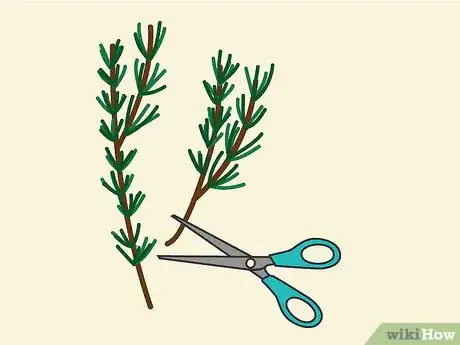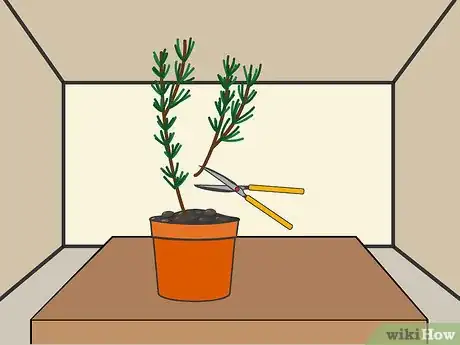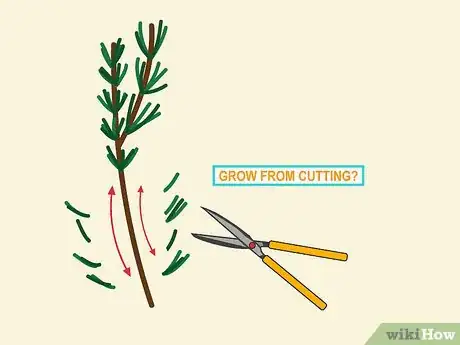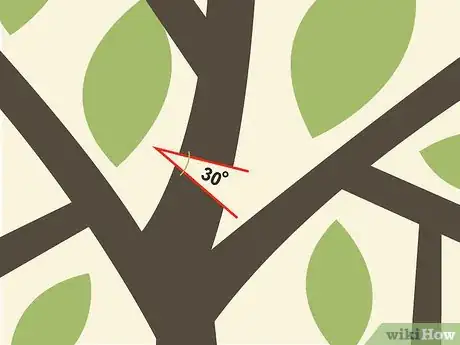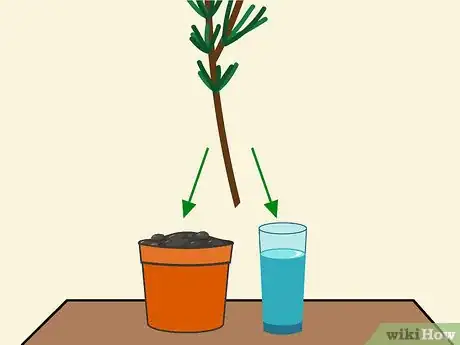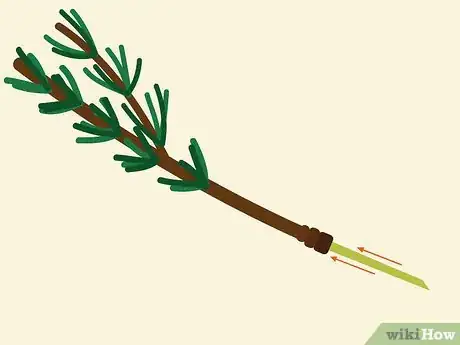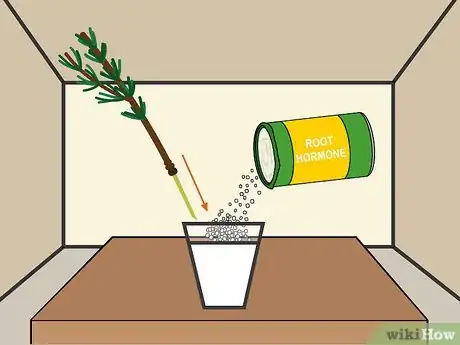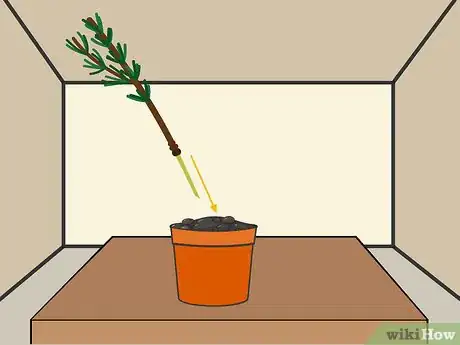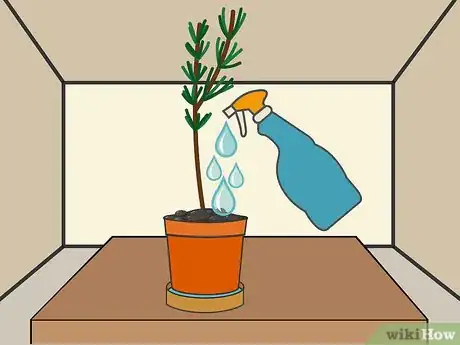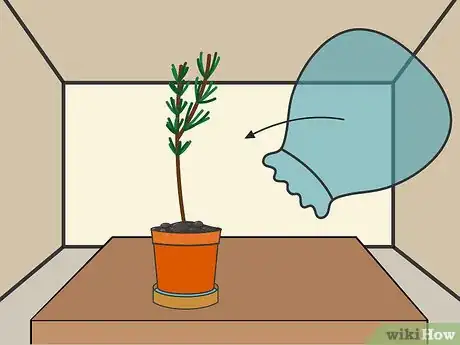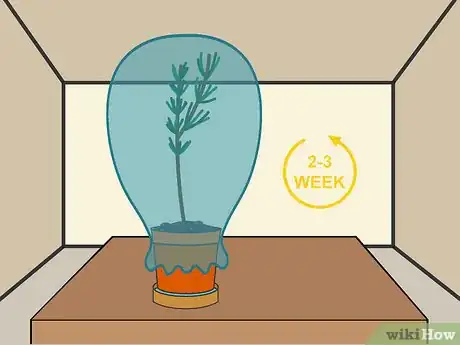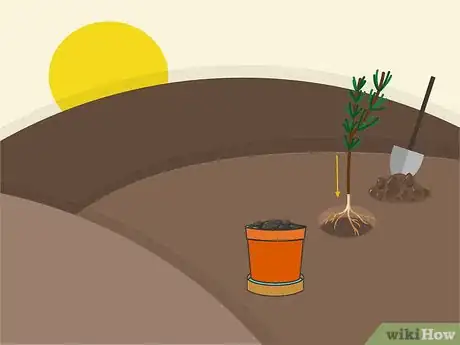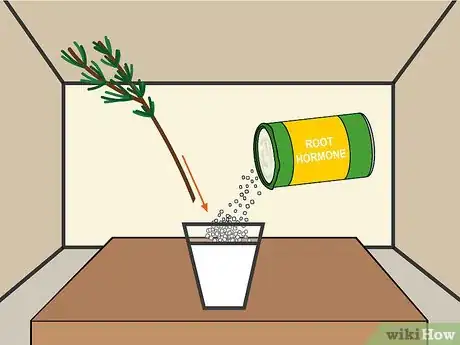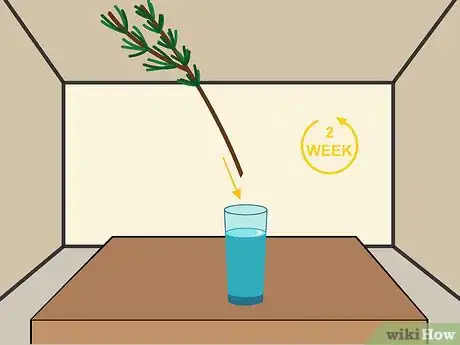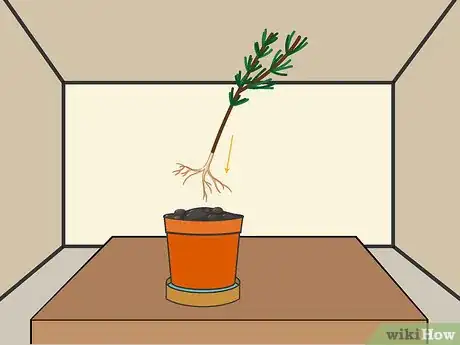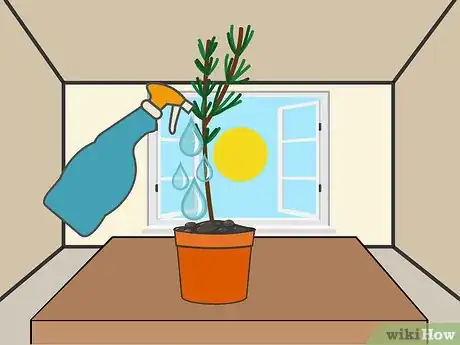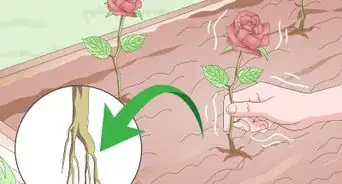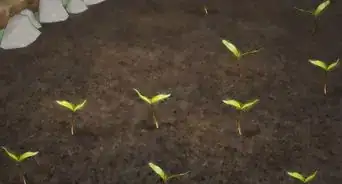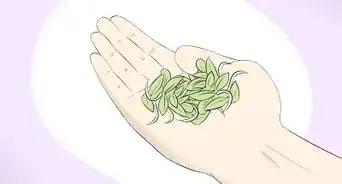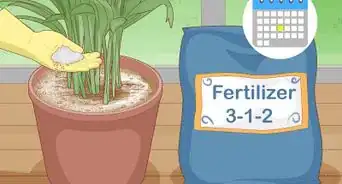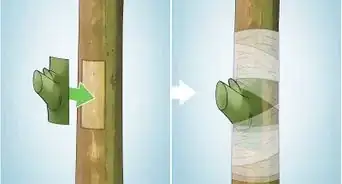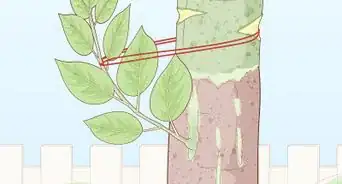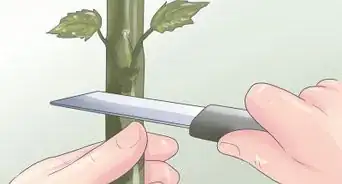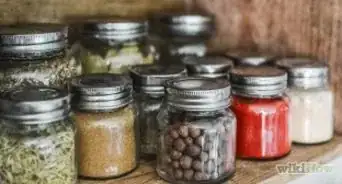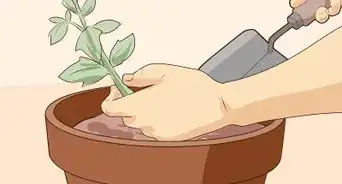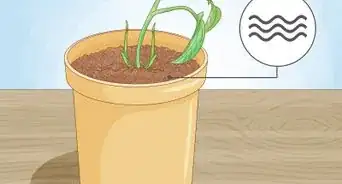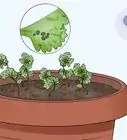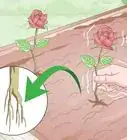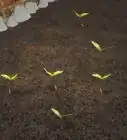This article was co-authored by Lauren Kurtz. Lauren Kurtz is a Naturalist and Horticultural Specialist. Lauren has worked for Aurora, Colorado managing the Water-Wise Garden at Aurora Municipal Center for the Water Conservation Department. She earned a BA in Environmental and Sustainability Studies from Western Michigan University in 2014.
There are 12 references cited in this article, which can be found at the bottom of the page.
wikiHow marks an article as reader-approved once it receives enough positive feedback. This article received 19 testimonials and 88% of readers who voted found it helpful, earning it our reader-approved status.
This article has been viewed 1,309,949 times.
Not all plants have to be grown from a seed. If you have an existing plant that you like, you can grow a new plant from one of its branches. Growing a plant from a cutting will take a couple of weeks, but is fairly easy to do as long as you follow the right steps. First, you'll need to cut off a young stem with a new shoot, then you'll have to grow a new root system using a bottle of water or a porous soil mixture. Once the roots have formed, all you need to do is transplant the cutting to soil and wait for your new plant to grow.
Steps
Making the Cuts
-
1Determine if your species of plant can grow from a cutting. Not all plants can grow from cuttings. Popular plants to grow from cuttings include rosemary, mint, basil, tomatoes, roses, English ivy, Chinese evergreen, and red and yellow dogwood plants. Check online or in a gardening guide to confirm that the plant you want to propagate can grow from cuttings.[1]
-
2Cut off a branch from the existing plant. Choose a healthy, disease-free branch from the top of the plant. Use gardening pruners and cut off the branch at its base.[2] Each cutting should be approximately 4–6 inches (10–15 cm) long.[3]
- Look for a young, thin branch, ideally one with new growth or shoots on it. These will grow best when transplanted.
Advertisement -
3Cut off big branches and 2/3 of leaves from the branch. Leaves and offshoot branches will inhibit new root growth, which is necessary to grow a plant from a cutting. Use your pruners to cut away offshoot branches and 2/3 of all the leaves on the cutting.[4]
- If the remaining leaves on the branch start to die while the roots are growing, it means that your new plant is dying.
-
4Cut the bottom of larger, woody branches on a 30-degree angle. Make an angled cut on the bottom of your cutting. This will help you remember which side is the bottom and will help you push the cutting into soil later. If you are growing herbs, you can skip this step.[5]
-
5Decide whether to grow your cutting in water or soil. The roots of larger plants with thick woody branches are known as hardwood cuttings and grow better in soil. Smaller herbs like basil, mint, and rosemary can initially be grown in water. Choose the method that best applies to your situation.[6]
- You can use the soil method for herbaceous and hardwood cuttings.
Using the Soil Method
-
1Scrape off the bark on the bottom of hardwood cuttings. Scrape off the top layer of bark near the bottom of your cutting with your pruners. Make sure not to cut too deep or you may damage the branch. Doing this will help the roots grow at the base of the new plant. If you are planting herb cuttings, you can skip this step.[7]
-
2Dab the end of the cutting in a root hormone, if desired. Purchase a gel or powder root hormone from a gardening store or online. Dabbing the bottom of the cutting into the hormone may speed up growth.[8]
-
3Transplant your cutting into a pot filled with a potting medium. The porosity of sand and perlite makes it a great medium to grow cuttings. You can also use a potting soil mixed with perlite or vermiculite. Push a pencil into the soil to create a hole for your cutting, then place the bottom half of the cutting into the soil.[9]
- Purchase a potting medium at a gardening or hardware store.
- Use a pot that has drainage holes in the bottom of it.
-
4Water the medium thoroughly. Thoroughly saturate the soil so that it’s completely wet. Your new cutting will require a lot of water initially before roots begin to form.[10]
- The soil should not pool on the top of your pot. If it does, it means you aren’t using the right potting soil or your pot doesn’t have drainage holes.
-
5Secure a plastic bag over the top of the pot. Tape or tie a plastic bag over the top of the pot, making sure that the bag doesn't touch the plant. This will increase the humidity around the cutting and will encourage growth.[11]
-
6Wait for 2-3 weeks for roots to form. Keep the cutting in a bright area, but away from direct sunlight. In 2-3 weeks, roots should have formed on the bottom of the cutting. Carefully feel under the cutting with your fingers to see if roots have started growing. If they have not developed, you'll have to make another cutting and restart the process.[12]
-
7Transplant the cutting once roots have formed. Once roots have grown out of the bottom of the cutting, it's ready to be moved to its permanent growing location. Use a small gardening shovel and dig around the cutting, making sure not to sever any of the new roots. Extract the plant from the pot and put it into new soil.[13]
- Search online to see how to care for and maintain your particular plant.
Growing Cuttings in Water
-
1Place the end of the cutting in a root hormone if desired. Root hormone can promote the growth of a new plant. Purchase either the gel or powder form of the hormone from a department or gardening store and dip the bottom end of the cutting in the hormone.[14]
- Do not inhale powdered root hormone.
-
2Place the cutting into a bottle of water for up to 2 weeks. Place the bottom of the cutting into a bottle or glass of water. Over the span of a week or 2, new roots should start to grow out of the bottom of your cutting.[15]
-
3Transplant your cutting to soil after roots start to develop. Take your plant out of the water and place the bottom of the cutting into well-ventilated soil like perlite or vermiculite. Keep the cutting in a dark place for 2-3 days so that the plant doesn’t have to expend energy on photosynthesis.[16]
-
4Place the plant in a sunny area and water it, if necessary. If you are growing your plant inside, you should water it every 2-3 days. If you are keeping it outside, make sure to put it in an area that gets adequate sunlight. Look in a gardening guide or online to find the proper way to maintain your new plant.
Expert Q&A
Did you know you can get premium answers for this article?
Unlock premium answers by supporting wikiHow
-
QuestionWhen is the best season to start a cutting?
 Lauren KurtzLauren Kurtz is a Naturalist and Horticultural Specialist. Lauren has worked for Aurora, Colorado managing the Water-Wise Garden at Aurora Municipal Center for the Water Conservation Department. She earned a BA in Environmental and Sustainability Studies from Western Michigan University in 2014.
Lauren KurtzLauren Kurtz is a Naturalist and Horticultural Specialist. Lauren has worked for Aurora, Colorado managing the Water-Wise Garden at Aurora Municipal Center for the Water Conservation Department. She earned a BA in Environmental and Sustainability Studies from Western Michigan University in 2014.
Professional Gardener
-
QuestionCan I root sedum spurium dragons blood using water as a medium?
 Lauren KurtzLauren Kurtz is a Naturalist and Horticultural Specialist. Lauren has worked for Aurora, Colorado managing the Water-Wise Garden at Aurora Municipal Center for the Water Conservation Department. She earned a BA in Environmental and Sustainability Studies from Western Michigan University in 2014.
Lauren KurtzLauren Kurtz is a Naturalist and Horticultural Specialist. Lauren has worked for Aurora, Colorado managing the Water-Wise Garden at Aurora Municipal Center for the Water Conservation Department. She earned a BA in Environmental and Sustainability Studies from Western Michigan University in 2014.
Professional Gardener
-
QuestionCan you take a cutting from any plant?
 wikiHow Staff EditorThis answer was written by one of our trained team of researchers who validated it for accuracy and comprehensiveness.
wikiHow Staff EditorThis answer was written by one of our trained team of researchers who validated it for accuracy and comprehensiveness.
Staff Answer wikiHow Staff EditorStaff Answer
wikiHow Staff EditorStaff Answer
Things You'll Need
Making the Cuts
- Pruners
Soil Method
- Pruners
- Root hormone (optional)
- Sand and perlite potting mix
- Plastic bag
- Rubber band or string
- Gardening Shovel
Cuttings in Water
- Root hormone (optional)
- Bottle or glass
- Water
- Potting soil
- Perlite
- Gardening shovel
References
- ↑ https://deepgreenpermaculture.com/diy-instructions/propagating-herbaceous-plants-from-cuttings/
- ↑ https://youtu.be/9Oo5FH7CoyI?t=51s
- ↑ https://deepgreenpermaculture.com/diy-instructions/propagating-herbaceous-plants-from-cuttings/
- ↑ https://youtu.be/9Oo5FH7CoyI?t=1m37s
- ↑ https://youtu.be/fzwVKZ6UoGM?t=3m9s
- ↑ https://www.purdue.edu/hla/sites/yardandgarden/extpub/new-plants-from-cuttings-text-only/
- ↑ https://youtu.be/9Oo5FH7CoyI?t=2m2s
- ↑ https://youtu.be/fzwVKZ6UoGM?t=3m27s
- ↑ https://youtu.be/fzwVKZ6UoGM?t=3m50s
- ↑ https://youtu.be/9Oo5FH7CoyI?t=2m48s
- ↑ https://www.purdue.edu/hla/sites/yardandgarden/extpub/new-plants-from-cuttings-text-only/
- ↑ https://www.purdue.edu/hla/sites/yardandgarden/extpub/new-plants-from-cuttings-text-only/
- ↑ https://www.purdue.edu/hla/sites/yardandgarden/extpub/new-plants-from-cuttings-text-only/
- ↑ https://youtu.be/bpk3Ukbtnt0?t=1m35s
- ↑ https://youtu.be/bpk3Ukbtnt0?t=1m51s
- ↑ https://youtu.be/bpk3Ukbtnt0?t=2m8s
About This Article
To grow cuttings from established plants, cut healthy, disease-free branches from the top of the plant. Make the cut at a 30° angle to the plant. Each cutting should be 4-6 inches long, and ideally should have new growth or shoots on it, as these will grow best when transplanted. Trim any big branches and about 2/3 of all of the leaves off of the branch, then either place your cutting in water or soil, depending which type of plant you’re trying to grow. To learn which plants grow best in soil and which prefer water, keep reading!
